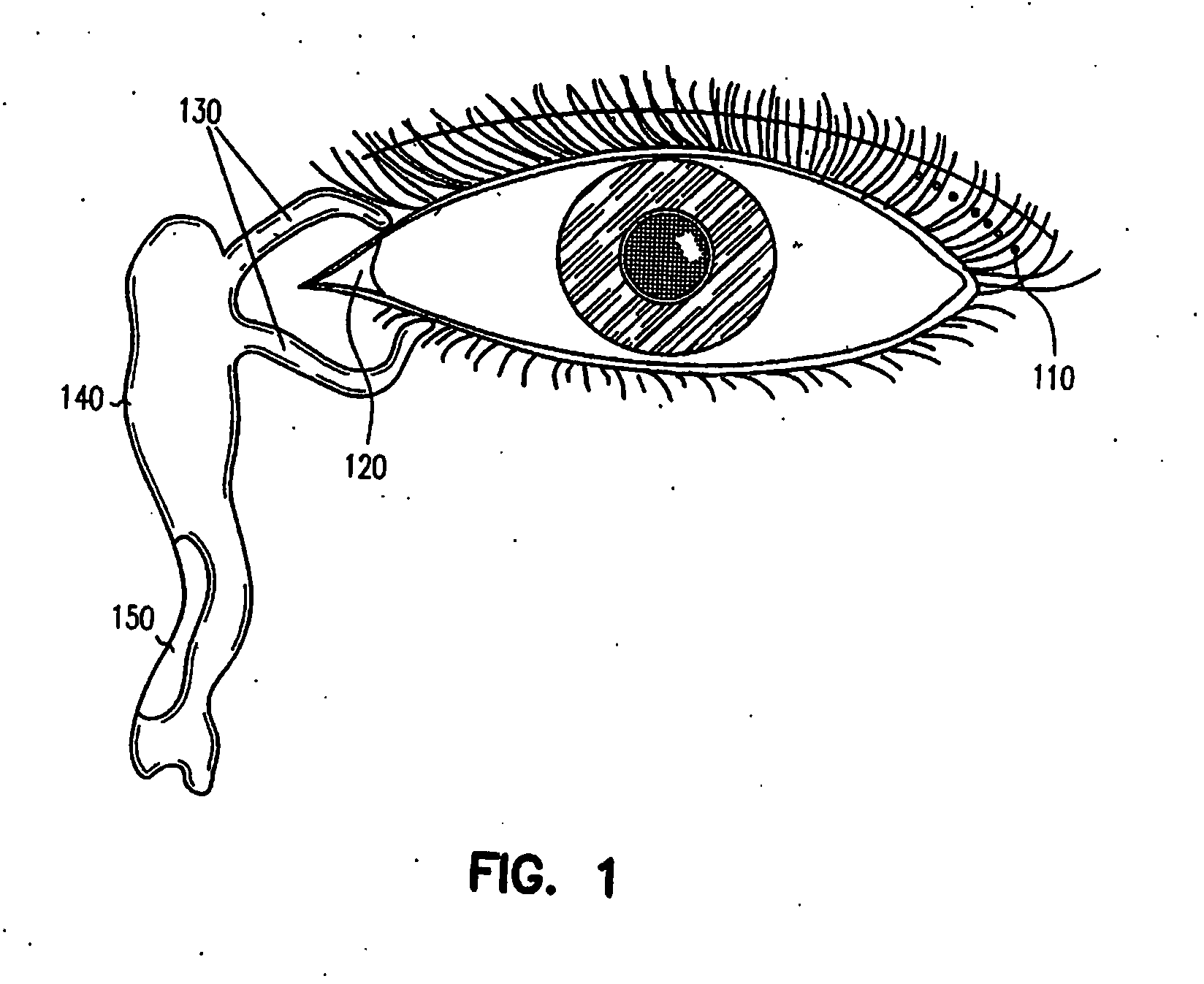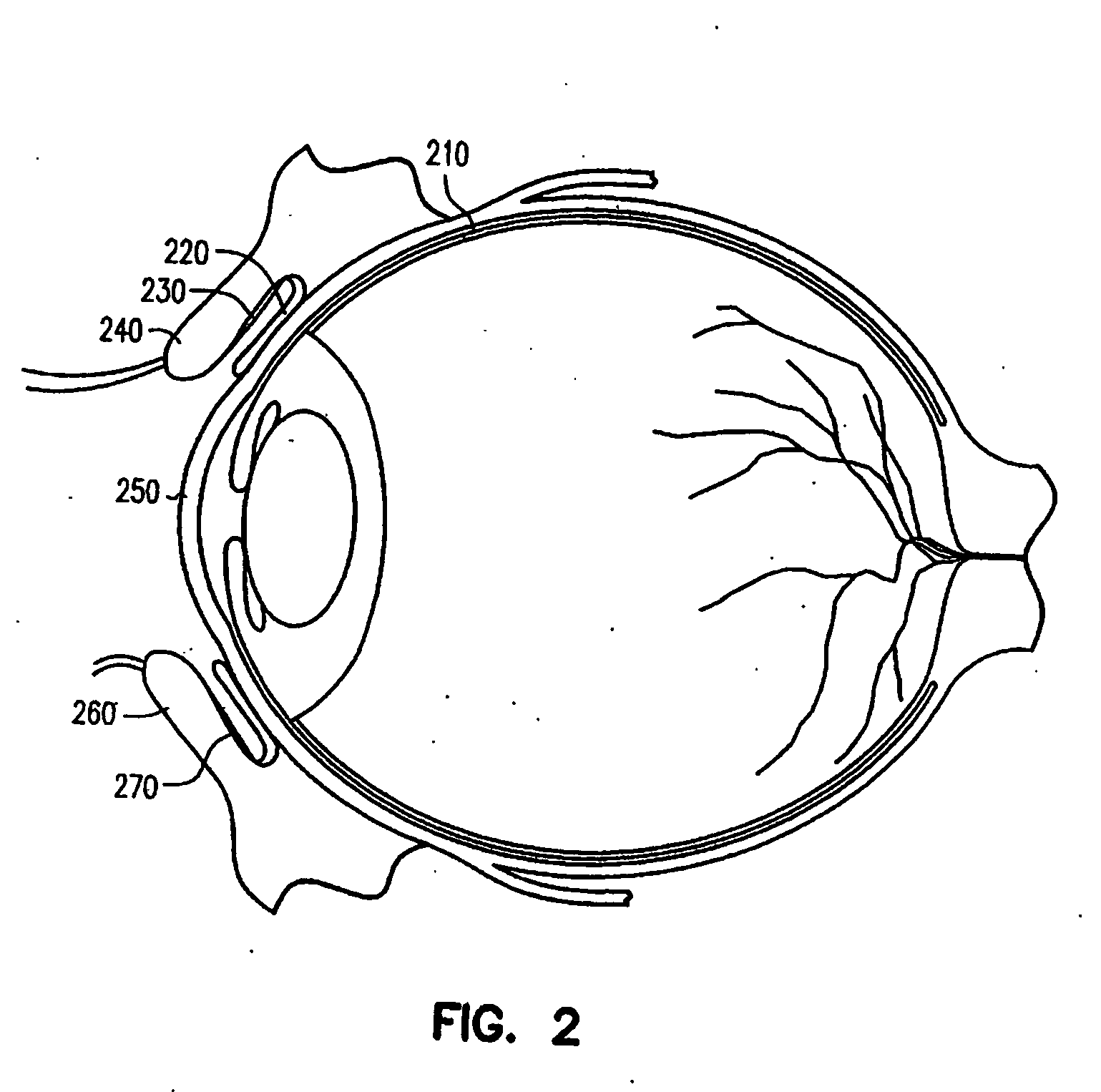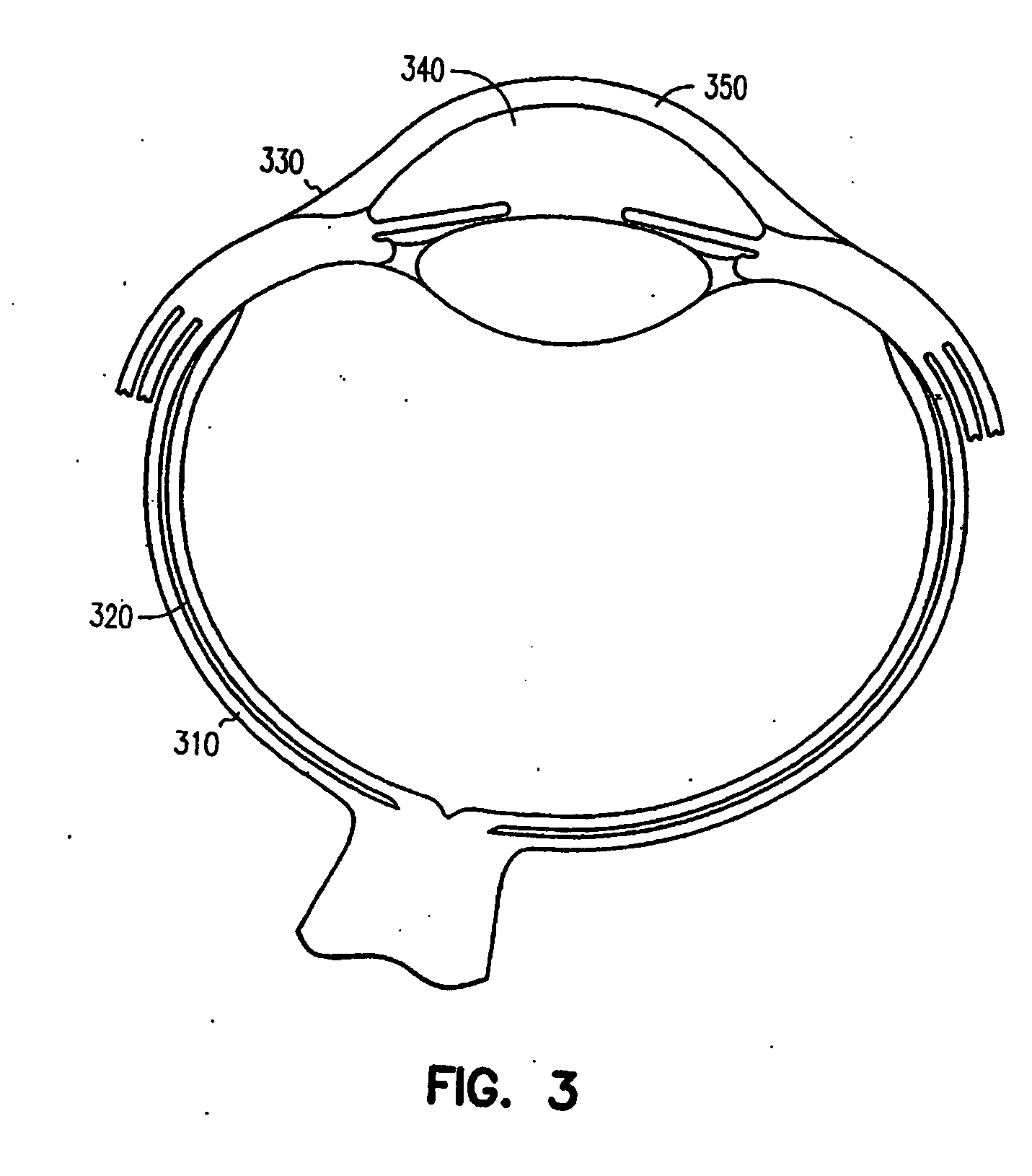Ocular delivery of polymeric delivery formulations
- Summary
- Abstract
- Description
- Claims
- Application Information
AI Technical Summary
Benefits of technology
Problems solved by technology
Method used
Image
Examples
example 1
Tolerability of the ATRIGEL® Delivery System Following Intraocular Injection
[0233] A series of preclinical studies were conducted to determine the tolerability of the ATRIGEL® Delivery System following intraocular administration. In these studies, New Zealand White rabbits were injected with one of three ATRIGEL® vehicles. Injections were performed directly into the eye (intravitreal injection), under the conjunctiva (subconjunctival injection) or through the membrane covering the muscles and nerves at the back of the eyeball (subtenon injection). The rabbits were observed periodically over 28 days for local reactions and ocular acuity. In addition, the vitreous humor was sampled to assess the cytopathological affect of each ATRIGEL® vehicle.
[0234] As expected with any intraocular administration, mild conjunctival congestion was noted for all ATRIGEL® solutions; however, this transient response resolved within 72 hours. Intraocular pressure and visual acuity remained unchanged th...
example 2
[0236] Several ATRIGEL® formulations containing PEG300, mPEG350, PEG400, NMP, triacetin, DMSO as well as neat DMSO and an aqueous solution of BEC were evaluated either intravitreally or subconjuctivally over three days in the rabbit eye. Several ATRIGEL® formulations were found to be acceptable for ocular implantation over a short time period using either route of administration, specifically, these included formulations containing PEG300, mPEG350, PEG400 and NMP. Therefore, a long-term irritation study was conducted with ATRIGEL® formulations containing PEG300, mPEG350 and NMP utilizing both routes of administration. The results of the long-term study show that polymer degradation occurs as expected and that no prolonged irritation is observed. Thus, ATRIGEL® formulations containing PEG300, mPEG350 and NMP can be considered acceptable vehicles for intravitreal or subconjuctival implantation and subsequent drug delivery.
[0237] The objective of this project is to assess the feasibil...
PUM
| Property | Measurement | Unit |
|---|---|---|
| Fraction | aaaaa | aaaaa |
| Time | aaaaa | aaaaa |
| Time | aaaaa | aaaaa |
Abstract
Description
Claims
Application Information
 Login to View More
Login to View More - R&D
- Intellectual Property
- Life Sciences
- Materials
- Tech Scout
- Unparalleled Data Quality
- Higher Quality Content
- 60% Fewer Hallucinations
Browse by: Latest US Patents, China's latest patents, Technical Efficacy Thesaurus, Application Domain, Technology Topic, Popular Technical Reports.
© 2025 PatSnap. All rights reserved.Legal|Privacy policy|Modern Slavery Act Transparency Statement|Sitemap|About US| Contact US: help@patsnap.com



